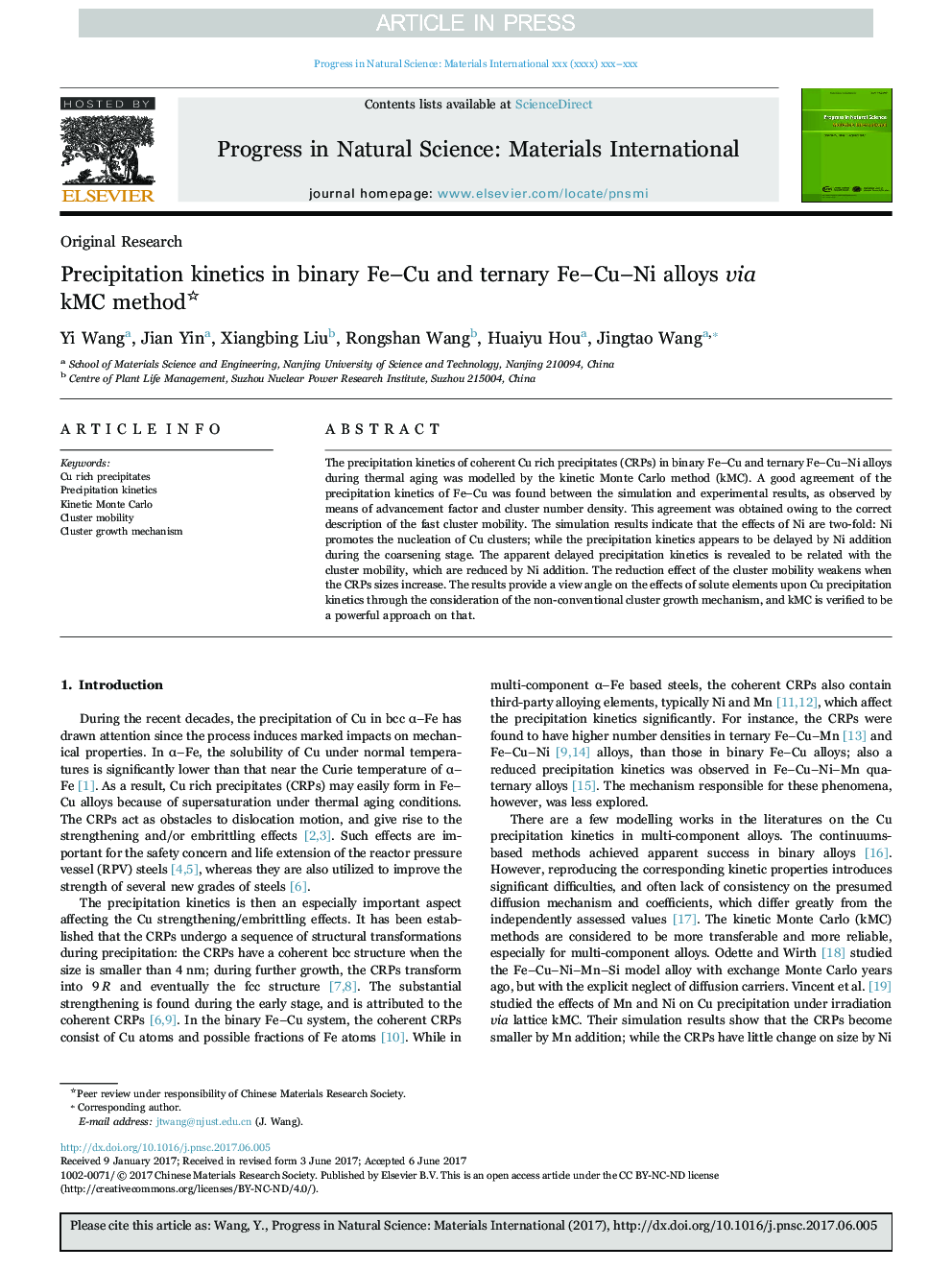| Article ID | Journal | Published Year | Pages | File Type |
|---|---|---|---|---|
| 5450346 | Progress in Natural Science: Materials International | 2017 | 7 Pages |
Abstract
The precipitation kinetics of coherent Cu rich precipitates (CRPs) in binary Fe-Cu and ternary Fe-Cu-Ni alloys during thermal aging was modelled by the kinetic Monte Carlo method (kMC). A good agreement of the precipitation kinetics of Fe-Cu was found between the simulation and experimental results, as observed by means of advancement factor and cluster number density. This agreement was obtained owing to the correct description of the fast cluster mobility. The simulation results indicate that the effects of Ni are two-fold: Ni promotes the nucleation of Cu clusters; while the precipitation kinetics appears to be delayed by Ni addition during the coarsening stage. The apparent delayed precipitation kinetics is revealed to be related with the cluster mobility, which are reduced by Ni addition. The reduction effect of the cluster mobility weakens when the CRPs sizes increase. The results provide a view angle on the effects of solute elements upon Cu precipitation kinetics through the consideration of the non-conventional cluster growth mechanism, and kMC is verified to be a powerful approach on that.
Related Topics
Physical Sciences and Engineering
Materials Science
Electronic, Optical and Magnetic Materials
Authors
Yi Wang, Jian Yin, Xiangbing Liu, Rongshan Wang, Huaiyu Hou, Jingtao Wang,
